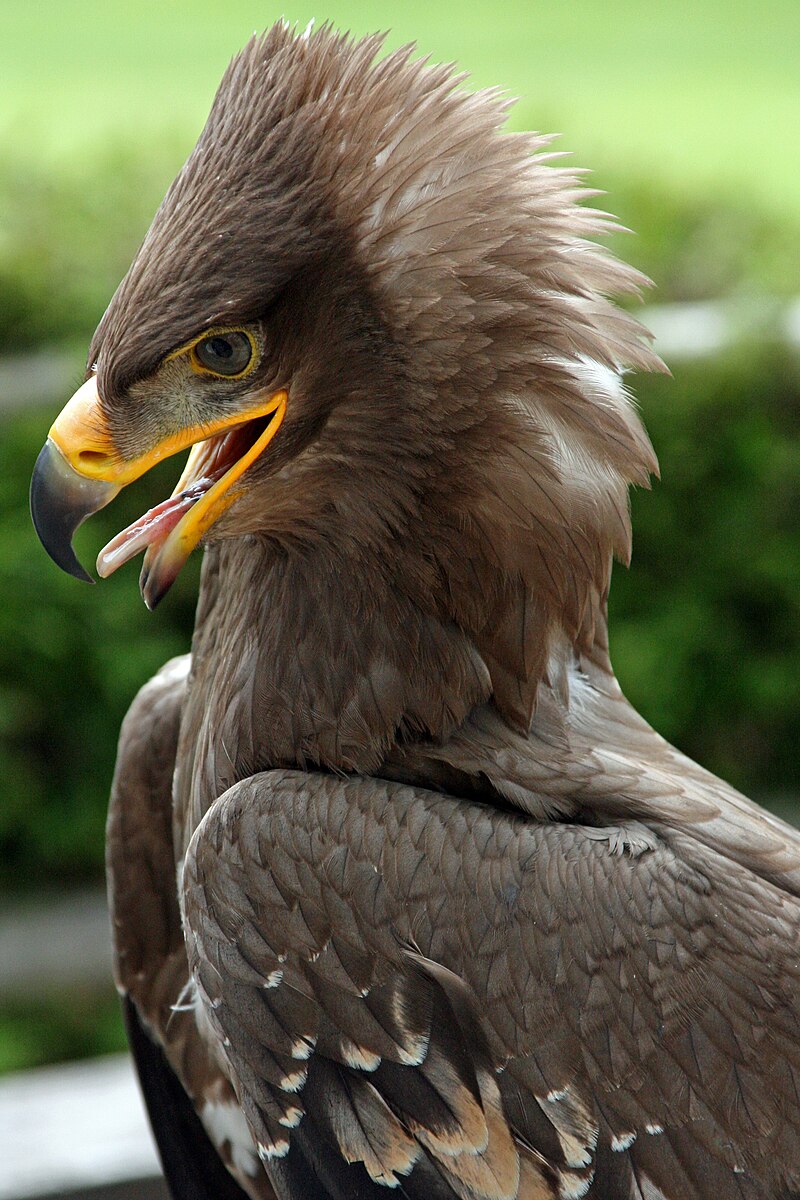The Steppe Eagle (Aquila nipalensis) is a large bird of prey known for its impressive lifespan, which can reach up to 40 years in captivity and 30 years in the wild. This article delves into the fascinating details of the Steppe Eagle’s longevity, providing a comprehensive understanding of this remarkable species.
The Steppe Eagle’s Lifespan: A Closer Look
The average lifespan of the Steppe Eagle is around 17 years, but some individuals have been known to live significantly longer. In captivity, the maximum recorded lifespan is 40 years, while in the wild, the maximum lifespan is estimated to be 30 years.
| Lifespan | Average | Maximum (Captivity) | Maximum (Wild) |
|---|---|---|---|
| Steppe Eagle | 17 years | 40 years | 30 years |
The Steppe Eagle’s impressive longevity can be attributed to several factors, including its large size, adaptability to various habitats, and efficient hunting strategies.
Factors Influencing the Steppe Eagle’s Lifespan
 Image source: Steppe Eagle by Fimb
Image source: Steppe Eagle by Fimb
Size and Adaptability
The Steppe Eagle is a large bird, with a body length ranging from 62 to 81 cm (24 to 32 inches) and a wingspan of 165 to 215 cm (5.4 to 7.1 feet). This impressive size, combined with the eagle’s adaptability to a wide range of habitats, including grasslands, steppes, and mountainous regions, contributes to its longevity.
Hunting and Feeding Habits
The Steppe Eagle is a skilled hunter, capable of catching a variety of prey, including small mammals, birds, and reptiles. Its efficient hunting strategies and ability to adapt to changing food sources help the eagle maintain a healthy and balanced diet, which is essential for its long lifespan.
Nesting and Breeding Habits
The Steppe Eagle builds large nests, approximately 1 meter wide and 50 cm deep, using small twigs and bedding the interior with materials such as old cloths, straw, or camel excrements. Both male and female eagles actively participate in nest building, and a single clutch typically consists of 1 to 3 eggs, which are incubated for around 45 days.
Parental Care and Chick Development
The Steppe Eagle’s parental care and the rapid growth and development of its chicks also contribute to the species’ longevity. Eaglets hatch weighing around 1.65 kg (3.6 lb) and can reach up to 2.9 kg (6.4 lb) by day 40. The chicks fledge relatively quickly, between 55 and 65 days, likely due to the vulnerability of the nest sites.
Threats to the Steppe Eagle’s Lifespan
Despite the Steppe Eagle’s impressive lifespan, the species faces several threats that can impact its longevity, including:
-
Habitat loss and degradation: The conversion of grasslands and steppes for agricultural and industrial purposes can reduce the availability of suitable nesting and hunting grounds for the Steppe Eagle.
-
Poisoning and persecution: The Steppe Eagle is sometimes targeted by farmers and livestock owners who view the bird as a threat to their animals, leading to poisoning and illegal hunting.
-
Electrocution and collisions: Power lines and wind turbines can pose a significant threat to Steppe Eagles, leading to electrocution and collisions.
-
Climate change: Changing weather patterns and environmental conditions can disrupt the Steppe Eagle’s food sources and nesting habitats, potentially affecting its long-term survival.
Conservation Efforts and the Future of the Steppe Eagle
To ensure the continued survival and longevity of the Steppe Eagle, various conservation efforts are underway, including:
- Habitat protection and restoration: Protecting and restoring grasslands and steppes to provide suitable nesting and hunting grounds for the Steppe Eagle.
- Mitigation of threats: Implementing measures to reduce the impact of threats such as electrocution, collisions, and persecution.
- Monitoring and research: Ongoing monitoring and research to better understand the Steppe Eagle’s population dynamics, behavior, and habitat requirements.
- Public awareness and education: Raising awareness about the importance of the Steppe Eagle and its conservation among local communities and the general public.
By addressing these conservation efforts, we can help ensure the long-term survival and continued presence of the majestic Steppe Eagle in its natural habitats.

